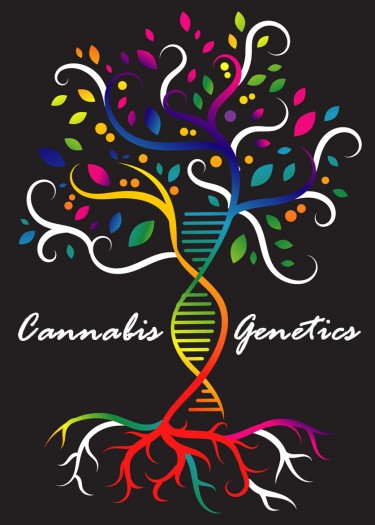
The Guide to Cannabis Genetics Terminology and Vocabulary
Cannabis genetics is a broad and very interesting topic, but few people tend to get the full message from articles on the subject. This is because they have little insight into the meanings of various cannabis genetics terminologies. When you sit at this table, you don’t need to be ashamed of anything.
Cannabis genetics is a niche that offers users extensive information about the marijuana family tree. In order for you to really understand the information in these sections, you need to understand the various terminologies used in cannabis genetics. All of these meanings are given here.
Cannabis genetics
For many years, scientists have been tasked with tracing the origin or genetic lineage of thousands of cannabis plants available in different parts of the world. Most of these researchers have indicated that all cannabis strains most likely started from an original species they named Cannabis Sativa L.
Cannabis genetics terminologies and their meanings
This list has been carefully compiled to help you understand the basic terms used by cannabis growers.
Category of cannabis plants
Cannabis is classified in the Cannaceae family. It grows in most of the regions of the world. The plant was first domesticated in Central Asia and has since been grouped according to subspecies and reproductive organs.
Based on reproductive organs.
Cannabis plants are predominantly dioecious (dioecious means that a cannabis plant can have either a male reproductive system or a female reproductive system), in rare cases a plant can be monoecious, which means that the plant develops both reproductive organs.
Hermaphroditism
This occurs when a plant is monoecious. In the vegetative phase, these plants fertilize themselves and let their flowers produce seeds. This phenomenon can be very difficult to manage in cannabis production as the seeds affect the quality of the plant.
Sensimilla (feminized) plants have the best properties and are seedless.
Based on different subspecies
There are three subspecies of cannabis, and each has individual characteristics that set them apart from the other two.
Cannabis Sativa (C. Sativa subsp.Sativa)
Plants that fall into this division come from tropical climates. These warm environments mean that the plant will have a longer flowering period. Cannabis Sativa grows tall and can adapt to hot and humid conditions because of the large, airy buds on its stems.
Cannabis indica (C. sativa subsp indica)
Indicas are mainly found in cold regions such as Central Asia and the Indian subcontinent. They produce a large amount of dense buds and tend to grow wider rather than taller. The short summers in cold regions have meant that these plants get used to a shorter flowering period.
Cannabis ruderalis (C. sativa subsp ruderalis)
Unlike the other two, cannabis ruderalis wasn’t discovered until the 1920s. The plants are tiny in appearance; The maximum height a ruderalis plant can reach is 60 cm. The plants have thin and sparse fabric stems that start to bloom from a month ago.
hemp
On many occasions, people have viewed hemp as a separate entity from cannabis. Hemp plants are a version of cannabis plants that are mass-produced for the textile industry. Fibers and even degradable plastics can be produced from these systems. Their THC levels are very low, which is not addictive. It also grows tall while having massive stems and few branches.
Cannabis genotype and phenotype
genotype
These are the genetic details of the plant. It describes how parent plants pass on and combine their genes to produce offspring. It refers to the plants’ DNA code, which determines their height, color, leaf shape and intermodal spacing. The genotype shows the traits a plant can develop as it grows from phase to phase.
Phenotype
This is the physical appearance of a plant. It is a factor that is influenced by both the environment in which the plant is grown and its genes. The phenotype of a cannabis plant is the combination of all traits (ecological and genetic) that a plant expresses in its developmental stages.
Other terminology in cannabis genetics
The above terms are the basic principles of cannabis genetics that you usually understand. The next few terminologies are used to characterize different cannabis plants.
Purebred vs landrace
It is logically wrong to refer to cannabis plants as landraces or mere needs.
When a plant is identified as purebred, it means that it has never been crossed with any other strain. This is wrong. As you know, cannabis has undergone various hybrids so that breeders can produce high quality plants. Even nature itself has resulted in cannabis plants being crossed over the past millennia. A male plant hundreds of miles away can pollinate a female plant by wind pollination. The landrace cannabis plant concept is also wrong. While they may have existed centuries ago, their present existence is pretty much impossible. Cannabis strains have been vigorously crossbred for many years.
Chemotype vs. chemovar
These terms are incorrectly used synonymously. Although they share common characteristics, both are methods of classifying cannabis strains based on their main cannabinoid compounds. In recent years, they have been used to differentiate cannabis based on its secondary cannabinoids, flavonoids, and terpene content.
All cannabis plants have different variations in their cannabinoid, flavonoid, and terpene content, which is why these terms are important. Chemotypes indicate that a plant can either be CBD-dominant, THC-dominant, or have a balanced CBD: THC content.
Variety vs. variety
The strain is used to identify the genetic difference in cannabis plants. Variety and strain can be used interchangeably, but the correct terminology in cannabis or plant genetics is strain. Strains are mainly used in virology and microbiology to differentiate microbes based on their genetic variance. Variety refers to plants that have been modified for human consumption.
Cannabis stabilization
This is the process by which breeding methods are used to produce plants with lesser alleles. Satankizaton helps create varieties with uniform and reliable characteristics.
There you have it, Cannabis Genetics 101
A summary of common cannabis genetics terms that can help you understand how cannabis exists as a unique species. With it you can discover the relationships between the different cannabis strains around the world.
MORE ABOUT MARIJUANA GENETICS READ THIS …

A FAST PRIMER TO THE GENETICS OF THE MARIJUANA PLANT!
OR..

What is the genetic wealth found in latin american cannabis strains?

Post a comment: